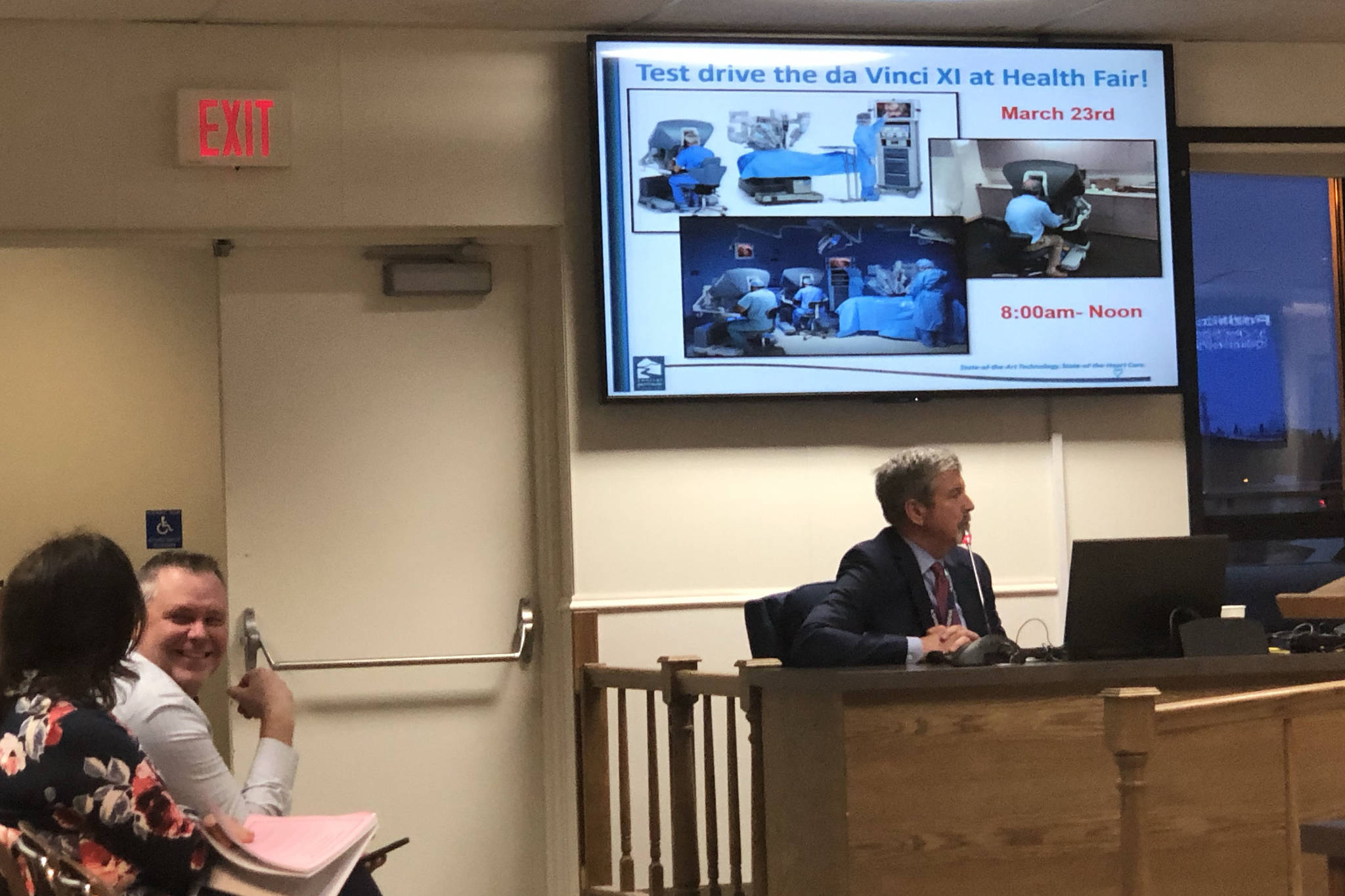The CEOs of Central and South Peninsula Hospitals presented updates on Feb. 19 to the Kenai Peninsula Borough Assembly on the financial statuses of the two hospitals, as well as the current status of the Master Facility Planning for the South Peninsula Hospital.
Central Peninsula Hospital
Rick Davis, CEO of Central Peninsula Hospital, gave a report on the first half of the hospital’s Fiscal Year 2019 compared to the same period of FY 2018. The following data was taken from Davis’s presentation.
Net revenue was $84 million, an increase of $4 million from the previous year.
Gross revenue was $180 million, an 8 percent increase from the previous year.
Net income was $6 million, a $1 million decrease from the previous year.
The cost of charity care was $2 million while bad debt totaled $3.1 million, and Davis said that these numbers are on track to total $10.6 million by the end of the year. Charity care is defined as medical service provided to a patient who has demonstrated the inability to pay, while bad debt is the total of uncompensated services where a patient was unwilling to settle a health-care claim regardless of financial status.
There was a total of $5.3 million in uncompensated care provided by the hospital.
The hospital’s total cash on hand was $39.2 million, which was a 3 percent decrease from the previous year.
The hospital paid $3.1 million toward bond payments from a general obligation fund issued in 2011.
The hospital paid $3 million toward bond escrow payments from 2014, 2015, and 2016.
$12 million was transferred to the plant replacement extension fund, making the total of this fund $44 million.
Central Peninsula Hospital will be hosting a community health fair on March 23 where members of the community can receive discounted blood work as well as test drive the hospital’s new da Vinci XI robotic surgical system.
Dr. Brandon Hall and Dr. Daniel Snyder were recently hired as family practice physicians and will work out of the Soldotna and Kenai Family Practice and Pediatric clinics.
Jim McHale was appointed president of the Board of Directors and Shaun Keef, formerly the Chief Financial Officer of the Hospital, was made the Chief Operating Officer.
Assembly Member Kelly Cooper asked Davis why the amount spent on uncompensated care had increased by $800,000 from the previous year. Davis responded that since 2014, with the opening of the insurance exchange market and Medicaid expansion, uncompensated care costs had dropped steadily for four years in a row. Davis described the sudden increase as a normalizing of the trend, and said he expected that number to continue to rise.
Assembly Member Willy Dunne asked about the hospital’s coordinated addiction services as well as the status of the hospital’s new transitional housing and detox facilities, since the borough had approved the funding of these projects last year. Davis said that both facilities are fully operational and are typically at capacity. Patients are treated from all over the peninsula and occasionally even from Anchorage, said Davis.
South Peninsula Hospital
Joseph Woodin, CEO of South Peninsula Hospital, also reported on the first half of FY19 for the hospital as well as the current status of the master facility expansion. The following information is based on Woodin’s presentation.
Net revenue was $75 million, an increase of $3.4 million from the previous year.
Net income was $429,000, and this was the first time in over 12 years that the hospital ended with a positive operating margin.
Operating cash was $19.3 million, a $5 million increase from the previous year. Woodin said that if the operating cash continues to be enough to fund 90 days of operation, the hospital could have extra money to put back into the borough’s budget.
$1 million was paid towards the $3 million bond for the expansion of the Homer Medical Center.
Woodin said that the master facility expansion for the hospital is still in the planning phase and that the expansion will likely include remodeling, consolidation of services, expansion of parking, and acquisition of private property to expand the size of the hospital’s campus. At the moment, planners are looking at previous expansion plans dating back to 1994 to determine what areas have been consistently problematic throughout the past two decades. Woodin said that creating more parking and ensuring ease of access to services are the top priorities for the expansion efforts.


